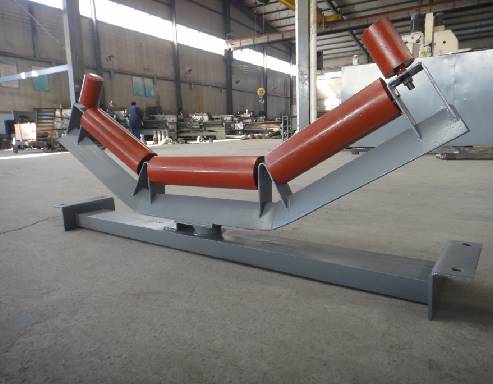 Afrikaans
Afrikaans  Albanian
Albanian  Amharic
Amharic  Arabic
Arabic  Armenian
Armenian  Azerbaijani
Azerbaijani  Basque
Basque  Belarusian
Belarusian  Bengali
Bengali  Bosnian
Bosnian  Bulgarian
Bulgarian  Catalan
Catalan  Cebuano
Cebuano  Corsican
Corsican  Croatian
Croatian  Czech
Czech  Danish
Danish  Dutch
Dutch  English
English  Esperanto
Esperanto  Estonian
Estonian  Finnish
Finnish  French
French  Frisian
Frisian  Galician
Galician  Georgian
Georgian  German
German  Greek
Greek  Gujarati
Gujarati  Haitian Creole
Haitian Creole  hausa
hausa  hawaiian
hawaiian  Hebrew
Hebrew  Hindi
Hindi  Miao
Miao  Hungarian
Hungarian  Icelandic
Icelandic  igbo
igbo  Indonesian
Indonesian  irish
irish  Italian
Italian  Japanese
Japanese  Javanese
Javanese  Kannada
Kannada  kazakh
kazakh  Khmer
Khmer  Rwandese
Rwandese  Korean
Korean  Kurdish
Kurdish  Kyrgyz
Kyrgyz  Lao
Lao  Latin
Latin  Latvian
Latvian  Lithuanian
Lithuanian  Luxembourgish
Luxembourgish  Macedonian
Macedonian  Malgashi
Malgashi  Malay
Malay  Malayalam
Malayalam  Maltese
Maltese  Maori
Maori  Marathi
Marathi  Mongolian
Mongolian  Myanmar
Myanmar  Nepali
Nepali  Norwegian
Norwegian  Norwegian
Norwegian  Occitan
Occitan  Pashto
Pashto  Persian
Persian  Polish
Polish  Portuguese
Portuguese  Punjabi
Punjabi  Romanian
Romanian  Russian
Russian  Samoan
Samoan  Scottish Gaelic
Scottish Gaelic  Serbian
Serbian  Sesotho
Sesotho  Shona
Shona  Sindhi
Sindhi  Sinhala
Sinhala  Slovak
Slovak  Slovenian
Slovenian  Somali
Somali  Spanish
Spanish  Sundanese
Sundanese  Swahili
Swahili  Swedish
Swedish  Tagalog
Tagalog  Tajik
Tajik  Tamil
Tamil  Tatar
Tatar  Telugu
Telugu  Thai
Thai  Turkish
Turkish  Turkmen
Turkmen  Ukrainian
Ukrainian  Urdu
Urdu  Uighur
Uighur  Uzbek
Uzbek  Vietnamese
Vietnamese  Welsh
Welsh  Bantu
Bantu  Yiddish
Yiddish  Yoruba
Yoruba  Zulu
Zulu take up pulley in belt conveyor
Understanding the Take-Up Pulley in Belt Conveyors
Belt conveyors are a vital component in numerous industrial applications, providing efficient transportation of materials across various distances. Among the many components that make up a belt conveyor system, the take-up pulley plays a crucial role in ensuring smooth operation and longevity of the conveyor belt. This article delves into the significance, function, and maintenance of take-up pulleys in belt conveyors.
What is a Take-Up Pulley?
A take-up pulley is a critical component of a belt conveyor system that is designed to maintain the proper tension on the conveyor belt. Located at one end of the conveyor, it compensates for belt stretch and wear that occurs over time. The pulley is often part of a take-up assembly, which may include mechanisms to adjust the position of the pulley, thereby allowing for the fine-tuning of belt tension.
The Importance of Belt Tension
Maintaining the correct belt tension is paramount for the efficient operation of a belt conveyor. Insufficient tension can lead to slippage, misalignment, and premature wear of both the belt and the conveyor components. On the other hand, excessive tension can cause damaging stresses on the belt and other parts of the system, including the motor and bearings. The take-up pulley helps to adjust and manage this tension dynamically as conditions change, such as during startup, shutdown, or varying load conditions.
How Does the Take-Up Pulley Work?
The take-up pulley operates through a system of weights or other mechanisms that exert force on the belt. In many designs, the pulley is either fixed or adjustable. Adjustable take-up assemblies allow operators to reposition the pulley as needed, accommodating for belt stretch after prolonged use. Hydraulic or manual adjustment systems are commonly used, giving operators the flexibility to maintain optimal tension.
Types of Take-Up Systems
There are primarily two types of take-up systems used in belt conveyors gravity take-up and mechanical take-up.
take up pulley in belt conveyor

1. Gravity Take-Up This system employs weights to maintain belt tension. The take-up pulley is suspended in such a way that the weight can exert downward pressure on the belt. As the belt wears and stretches, the weight can descend, thereby maintaining consistent tension.
2. Mechanical Take-Up In mechanical take-up systems, specialized mechanisms such as gears or sprockets are used to adjust the position of the take-up pulley. This allows for precise control over the tension on the belt, making it easier for operators to accommodate changes as they arise.
Maintenance of the Take-Up Pulley
Regular maintenance of the take-up pulley and the entire conveyor system is essential for optimal performance. Here are several key maintenance practices
- Inspection Conduct routine checks of the take-up pulley and its components to identify any signs of wear, misalignment, or malfunction. This includes inspecting the bearings, as they are critical for ensuring smooth rotation of the pulley.
- Tension Adjustment Periodic tension adjustments may be necessary, especially after significant changes in load or belt conditions. Make any adjustments carefully, ensuring that the belt is neither too loose nor too tight.
- Lubrication Proper lubrication of the take-up pulley bearings is crucial. This can prevent overheating and premature failure of components.
- Cleaning Dust, dirt, and other contaminants can impede the functionality of the take-up system. Regular cleaning helps maintain efficiency and prolongs the life of the conveyor.
Conclusion
The take-up pulley is an essential component of belt conveyor systems, ensuring that belts operate at optimal tension for maximum efficiency and longevity. Understanding its function, types, and maintenance practices is critical for anyone involved in the operation or management of conveyor systems. By ensuring that the take-up pulley is well-maintained, operators can significantly enhance the performance and reliability of their belt conveyors, leading to improved operational efficiency and reduced downtime.
-
Revolutionizing Conveyor Reliability with Advanced Rubber Lagging PulleysNewsJul.22,2025
-
Powering Precision and Durability with Expert Manufacturers of Conveyor ComponentsNewsJul.22,2025
-
Optimizing Conveyor Systems with Advanced Conveyor AccessoriesNewsJul.22,2025
-
Maximize Conveyor Efficiency with Quality Conveyor Idler PulleysNewsJul.22,2025
-
Future-Proof Your Conveyor System with High-Performance Polyurethane RollerNewsJul.22,2025
-
Driving Efficiency Forward with Quality Idlers and RollersNewsJul.22,2025





























